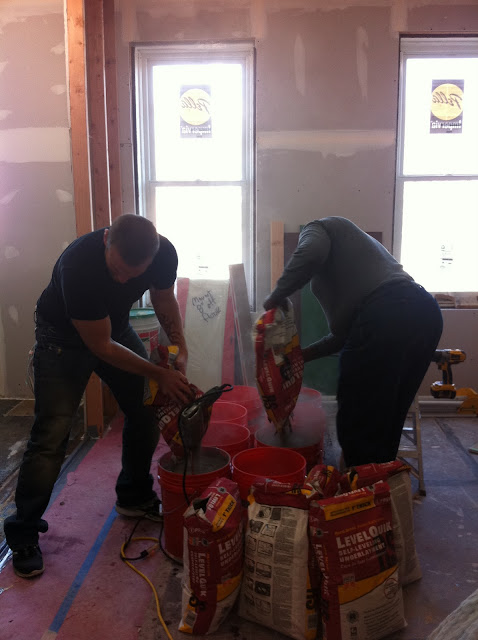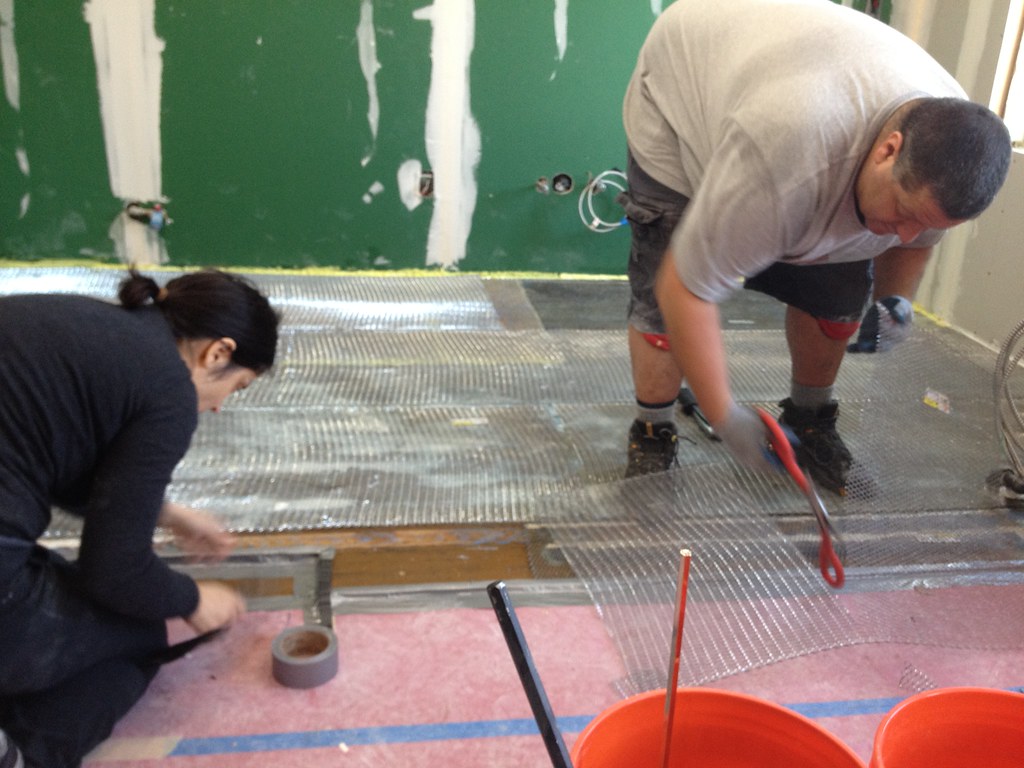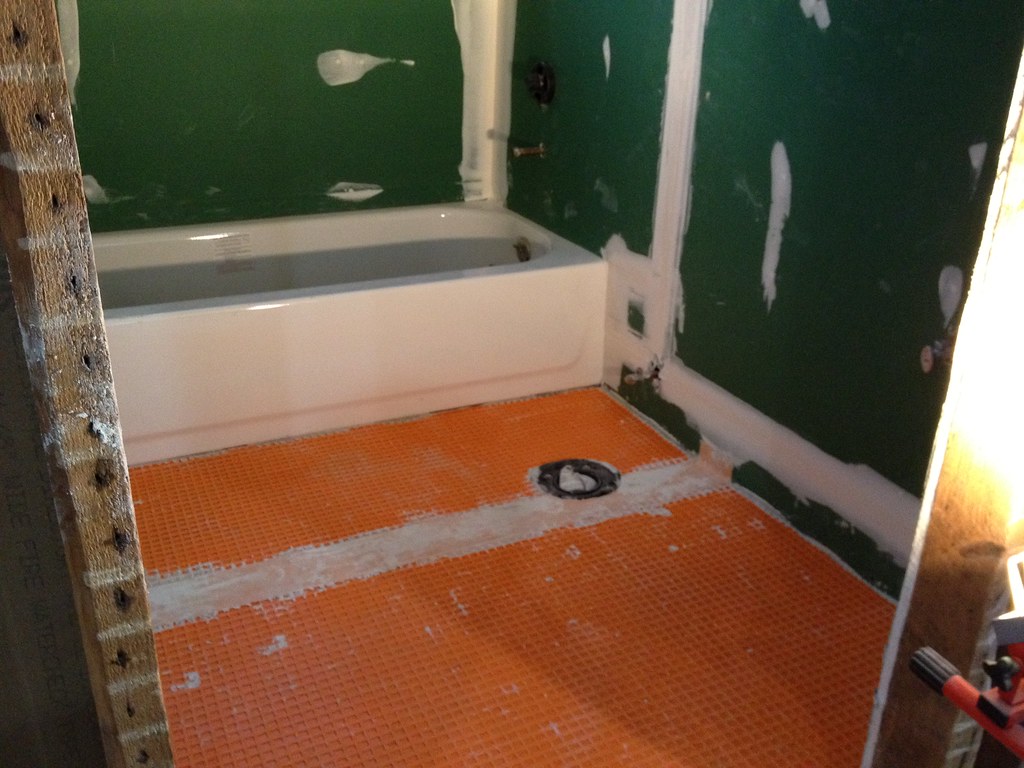Well... It has been a month since we posted, and yes, you guessed it, nothing (much) has happened in the month. The carpenter was back in to do a little framing work, and the plumber was back in to begin to re-route the old radiator risers. But, the framing can't be completed until the risers have been moved, and the plumbers are waiting on the second water heater to make their final push...and thus, we can't begin the floors in the kitchen/bath until the above is taken care of in those areas. Maybe this week...?
In other maters, we did get a record snowfall for the month of October over the Halloween weekend here in Gendale, NYC. About 3" of the heavy, slushy, snow-ice mix.
 |
| October 30, 2011 in the am, backyard |
|
|
|
|
This snow reveled a error on our part. The roof vent for the kitchen was not sealed completely.
When cutting the roof membrane for the vent hole, I needed to do it twice, as the first cut was 2" off center of where the vent needed to be. Replacing the piece of cut crescent-shaped membrane, I glued it down, but neglected covering it with the cloth and tar-flashing...
Yes, you guessed it, during the snow and the freeze-thaw, the cut membrane "popped" and water came in. Fortunately, that area of the kitchen ceiling had not been closed up, and the only thing getting wet was the floor and a bit of the insulation, which was quickly pulled out to let the water "drip"freely into buckets. Firing up the kero-heater dried out the mess--after, on Sunday, 10/30, we shoveled off the roof so as to minimize the water damage...
 |
| Notice the cut piece of roof membrane not covered by the tar...How could I have missed THAT? |
Whoops! Lesson learned. Double and triple check your roofing work...
A happier sight was the installation of ONE of the hot-water heaters a week ago. The other one, as of this posting, is still MIA, although they were ordered together....
 |
| Bradford White--smaller profile, same 40Gal size as the 20+ year-old A.O. Smith |
But, we still do not have heat, as of this posting... we bought a kerosene heater, and some of the rock-wool insulation we are installing on the exterior walls. Maybe today is the day for the other water heater to arrive...
 |
| Kerosene heater and Rock-wool insulation |

































